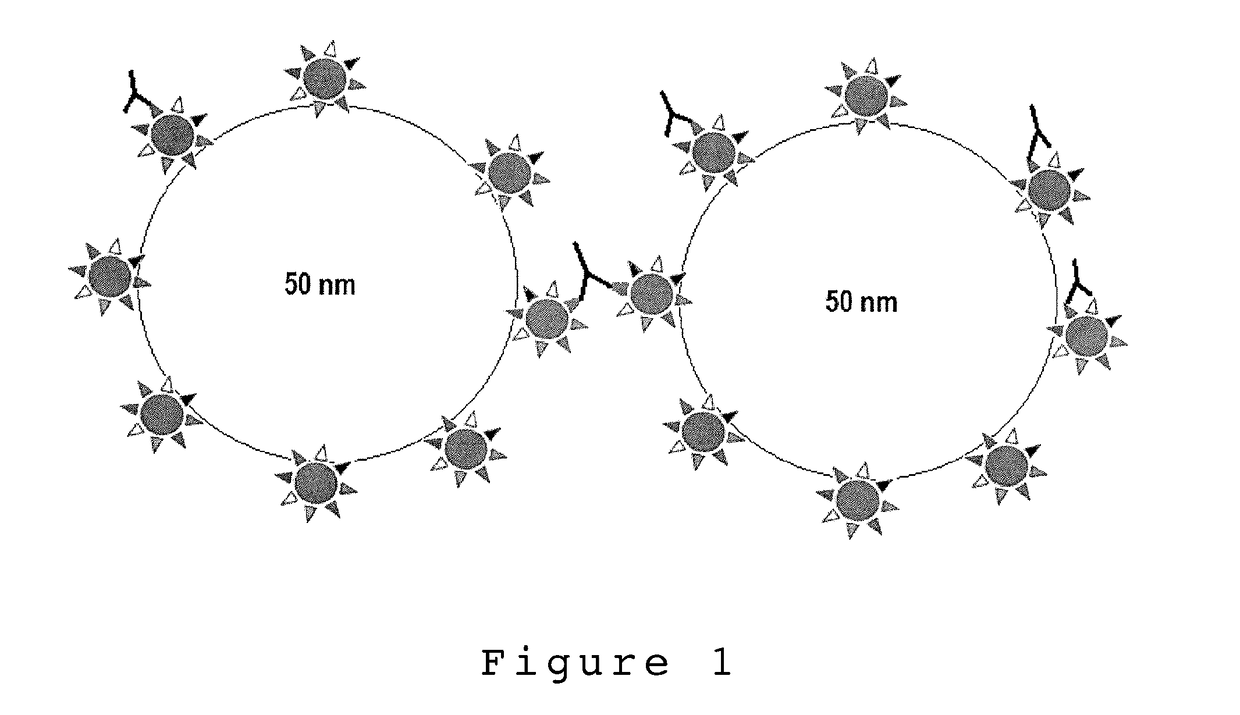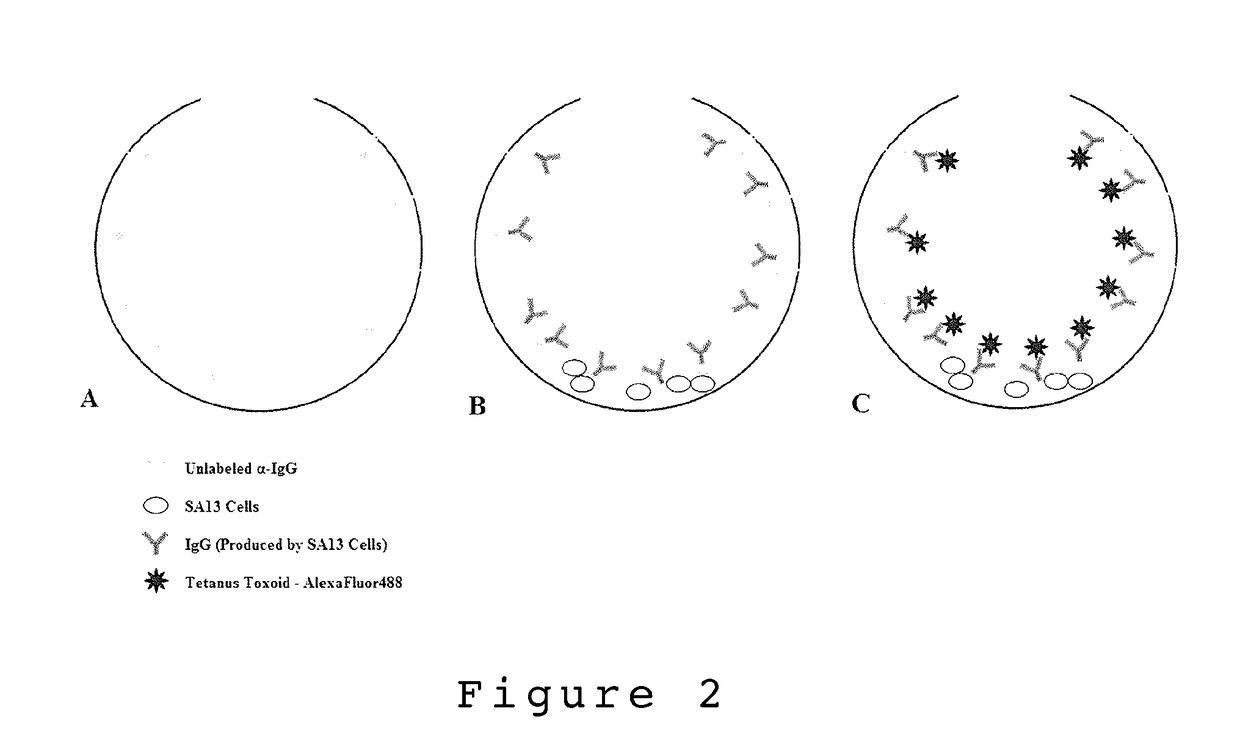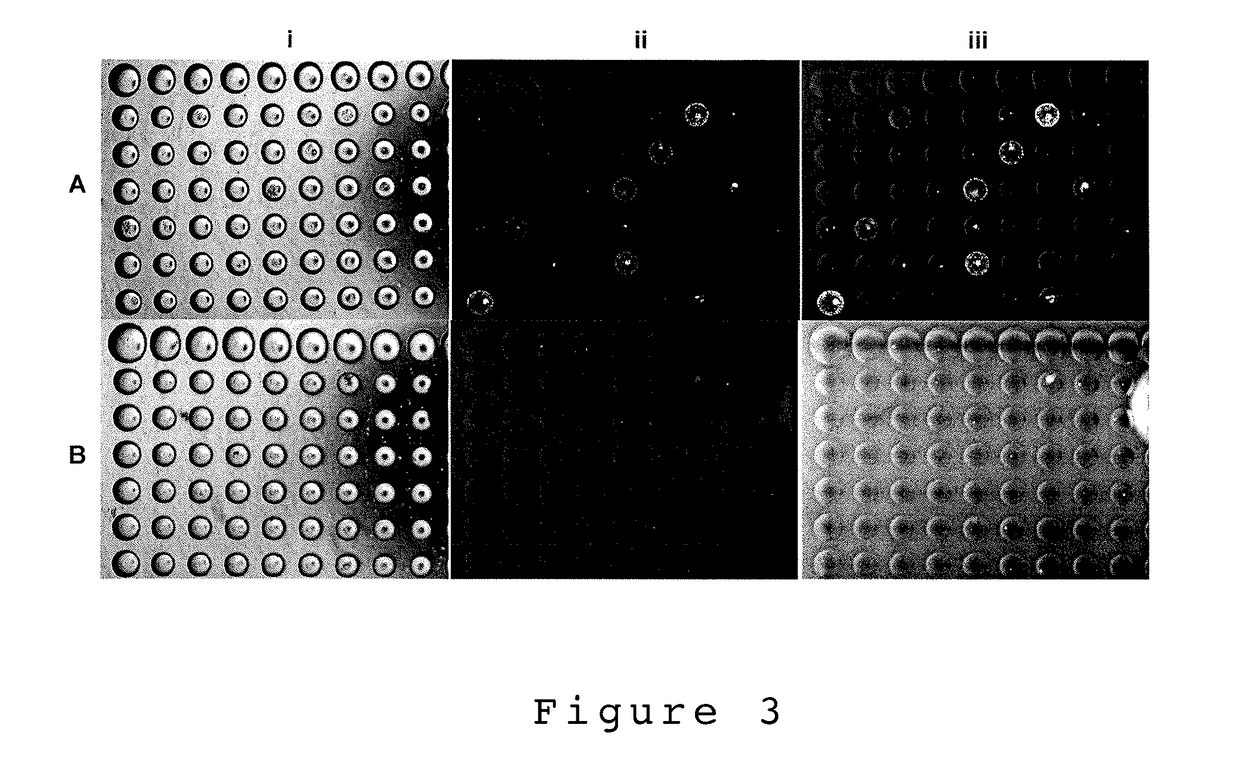High-throughput single cell sorting using microbubble well arrays
a microbubble well and array technology, applied in the field of microfabricated devices and methods for high throughput single cell screening, can solve the problems of affecting the self-conditioning of cells in wells when seeded under limiting dilution, and affecting the quality of microbubble wells
- Summary
- Abstract
- Description
- Claims
- Application Information
AI Technical Summary
Benefits of technology
Problems solved by technology
Method used
Image
Examples
experimental examples
[0104]The invention is further described in detail by reference to the following experimental examples. These examples are provided for purposes of illustration only, and are not intended to be limiting unless otherwise specified. Thus, the invention should in no way be construed as being limited to the following examples, but rather, should be construed to encompass any and all variations which become evident as a result of the teaching provided herein.
[0105]Without further description, it is believed that one of ordinary skill in the art can, using the preceding description and the following illustrative examples, make and utilize the present invention and practice the claimed methods. The following working examples therefore, specifically point out the preferred embodiments of the present invention, and are not to be construed as limiting in any way the remainder of the disclosure.
Cells and Cell Lines
[0106]Three cell lines were selected for demonstrating the diffusion assay proof...
example 1
Detection of IgG by Immunoprecipitation
[0108]In one embodiment, the present invention describes a single cell screening method using microbubble well arrays where cells are by what they secrete using immunoprecipitation detection. For immunoprecipitation to take place the immunoglobin present must be able to bind a multivalent reporter (antigen or antibody) to form large polymerized agglutinates. Once a sufficient size threshold is reached the agglutinates settle forming a precipitate [33]. For example, SA13 hybridoma cells were used to demonstrate the accumulation of IgG secretions in the MB well using immuno-precipitation detection. Following the seeding of SA13 cells into the MB array, a rabbit α-human IgG-FITC reporter (Rockland antibodies and assays #209-4202, USA) was added to the culture media. The chips were incubated with the reporter over 3-4 days and imaged daily using an inverted fluorescent microscope (Olympus IX70 with Qlmaging Retiga EXi camera). Images were taken in ...
example 2
Tetanus Toxoid Antigen Specific Immunoglobin Detection by Immunoprecipitation Using a Nanoparticle Multivalent Reporter Construct
[0110]Nanoparticle Synthesis
[0111]Clostridium tetani Tetanus Toxoid (Pierce Antibodies HYB 278-17-02, Thermo scientific, USA) was conjugated to carboxyl terminated polystyrene nanoparticles with an average size of 50 nm (Polylink Polysciences, Inc., USA) through covalent coupling via EDC. The conjugation was done by the manufactures specifications with some procedural alterations. Due to cost associated with tetanus toxoid, 3 ug of tetanus toxoid was added to the NP suspension, this was approximately 100× less antigen than the procedure called for to obtain complete PS-NP antigen saturation. Additionally, the toxoid-NP incubation was done over the course of 2 hours with light mixing. This was in contrast to the manufactures recommendation of a 1 hour incubation period. This was done to increase likely hood of NP-toxoid conjugation due to the relatively low...
PUM
 Login to View More
Login to View More Abstract
Description
Claims
Application Information
 Login to View More
Login to View More - R&D
- Intellectual Property
- Life Sciences
- Materials
- Tech Scout
- Unparalleled Data Quality
- Higher Quality Content
- 60% Fewer Hallucinations
Browse by: Latest US Patents, China's latest patents, Technical Efficacy Thesaurus, Application Domain, Technology Topic, Popular Technical Reports.
© 2025 PatSnap. All rights reserved.Legal|Privacy policy|Modern Slavery Act Transparency Statement|Sitemap|About US| Contact US: help@patsnap.com



